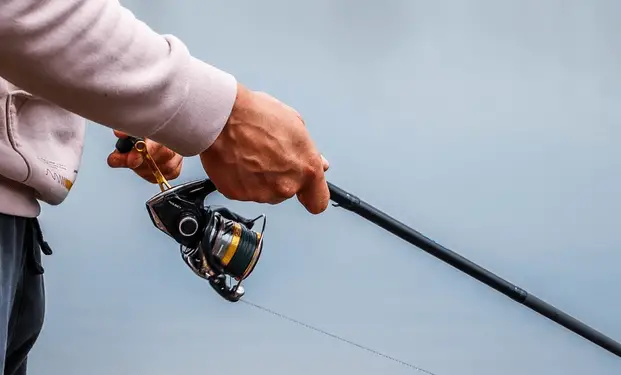Welcome to fishing lovers guide blog, In this article today I we share about the best baitcasting reel for beginners –
The best baitcasting reel for beginners is the KastKing Royale Legend/Whitemax Low Profile Baitcasting Fishing Reel. Perfect for learning and offering a smooth, easy learning curve for beginners.
As you start your journey into the world of baitcasting reels, choosing the right one can be important to your success. A baitcasting reel designed for beginners can make the learning process smoother and more enjoyable. In this guide, we will explore the features to look for in a beginner baitcasting reel, as well as review some top options to help you make an informed decision.
By the end, you will have the information you need to choose the best baitcasting reel for your skill level and fishing needs.
Choosing The Right Baitcasting Reel
A baitcasting reel can be an excellent addition to any angler’s arsenal, offering precise casting and the power to tackle larger fish. However, for beginners, choosing the right baitcasting reel can be a hard task. With many options available, it’s essential to consider features that best suit your fishing needs. we’ll explore the key features to look for when selecting a baitcasting reel and understanding the significance of gear ratios to help beginners make an informed decision.
Features To Look For
When selecting a baitcasting reel, several features are crucial for beginners to consider. These features can greatly impact the performance and ease of use of the reel. Here are some essential features to prioritize:
- Braking System: Look for a reel with an adjustable braking system, which helps prevent backlash and allows for more accurate casts, especially for beginners still mastering their casting technique.
- Drag System: A smooth and reliable drag system is essential for battling fish. Ensure the drag system is easy to adjust and provides consistent resistance when fighting a fish.
- Frame Material: Opt for a reel with a sturdy yet lightweight frame material, such as aluminum or graphite, for durability and reduced hand fatigue during extended fishing sessions.
- Handle and Grip: Consider a reel with a comfortable and ergonomic handle, providing a secure grip for better control when reeling in fish.
- Line Capacity: Select a reel with sufficient line capacity to accommodate the types of fishing lines and lures you intend to use.
Understanding Gear Ratios
The gear ratio of a baitcasting reel recommended how many times the spool revolves with one turn of the handle. Understanding gear ratios is important as it directly influences the speed and power of the retrieve. Here’s a breakdown of common gear ratios and their similar applications:
| Gear Ratio | Applications |
| Fast (7.0:1 and above) | Ideal for techniques requiring quick lure retrieval, such as flipping and pitching, as well as for topwater fishing. |
| Medium (6.4:1 to 6.9:1) | A versatile gear ratio suitable for a wide range of fishing techniques, including crankbait and spinnerbait fishing. |
| Slow (Below 6.4:1) | Best suited for techniques demanding more torque and power, such as deep crankbait fishing and heavy cover applications. |
Setting Up Your Baitcasting Reel
Setting up your baitcasting reel is an important step for beginners to master. Properly adjusting brakes and tension, as well as adjusting spool tension, are essential to ensure a smooth and trouble-free fishing experience. With the right guidance, setting up your baitcasting reel can be less difficult and more enjoyable, allowing you to focus on catching your prize fish.
Adjusting Brakes And Tension
When setting up your baitcasting reel, it’s major to understand how to adjust the brakes and tension for optimal performance. Brakes are crucial for controlling the speed of the spool during casting, while tension control the spool’s rotational speed and backlash.
- Begin by setting the brake system to a moderate level, especially if you’re a beginner. This will help minimize backlashes while you’re still getting used to the reel.
- Adjust the tension knob by turning it clockwise to increase tension and counterclockwise to decrease tension. Start with a slightly difficult tension setting, then gradually loosen it until you find the optimal balance between casting distance and minimizing backlash.
Proper Spool Tension Adjustment
Spool tension adjustment is vital for preventing backlashes and overruns when casting. By properly adjusting the spool tension, you can minimize tangles and frustration while maximizing your casting distance and accuracy.
- Begin by pressing the thumb bar and releasing the tension knob to free the spool. The lure should fall slowly and smoothly towards the ground when the spool is properly adjusted.
- Continue adjusting the tension knob until you find the right balance where the lure drops smoothly without any resistance but without causing the spool to spin excessively after the lure touches the ground.
Casting Techniques For Beginners
When it comes to mastering baitcasting reels, beginners need to focus on essential casting techniques. Understanding the proper way to cast can make a significant difference in your fishing experience. Below, we discuss key techniques beginners should focus on to improve their casting skills.
Thumb Control 101
Thumb control is crucial in baitcasting reels to prevent backlash. Engage your thumb lightly during the cast to control the speed and tension. Avoid sudden stops to minimize backlash and achieve smooth casts.
Mastering Backlash Prevention
Proper spool tension adjustment is key to preventing backlash. Start with a higher tension setting and gradually loosen it as you become more comfortable with your casting technique. Practice makes perfect when it comes to prevent backlash.
Maintenance Tips For Longevity
Learn essential maintenance tips to prolong the lifespan of your baitcasting reel as a beginner angler. Consistent cleaning and proper lubrication are key for optimal performance and durability, ensuring smooth casts and long-term use of your fishing gear.
Cleaning And Lubricating
To ensure the longevity of your baitcasting reel, regular cleaning and lubrication are essential. Cleaning your reel after each use helps remove dirt, sand, and debris that can cause damage over time. Use a gentle brush or toothbrush to remove any visible residue. Then, wipe down the reel with a soft cloth or paper towel to ensure it’s thoroughly clean. Applying lubricant to the moving parts of your reel is equally important. This helps minimize friction and ensures smooth operation. When choosing a lubricant, opt for one specifically designed for fishing reels. Apply a small amount to the gears, bearings, and other moving parts, making sure not to over-lubricate. Excess lubrication can attract dirt and cause clogging, leading to decreased performance.
Troubleshooting Common Issues
While using a baitcasting reel as a beginner, you may encounter a few common issues that can affect your overall fishing experience. These issues include bird’s nests and reel noise, which can be frustrating but are also easily solvable. In this section, we will discuss two of the most common problems beginners encounter and provide you with simple solutions to overcome them without any hassle.
Dealing With Bird’s Nests
Bird’s nests, also known as backlash, occur when the fishing line gets tangled and forms a messy knot on the reel. This can happen when you cast too forcefully or don’t have proper control over the spool. Fortunately, there are a few steps you can take to prevent and resolve this issue:
- Adjust the spool tension: Begin by tightening the spool tension knob located on the side of the reel. By doing so, you can control the speed at which the line comes off the spool, reducing the chances of a bird’s nest.
- Master your casting technique: Practice your casting technique to improve your control over the line when casting. Properly timing the release of the spool and feathering the line with your thumb can minimize the risk of backlash.
- Retrieving line carefully: When retrieving your line, maintain a steady and consistent pace. Avoid jerky movements or reeling too fast, as this can lead to line tangles. Take your time and ensure a smooth retrieval process.
Addressing Reel Noise
Reel noise can be quite annoying, but it’s not uncommon, especially with newer baitcasting reels. The noise can be caused by various factors, including the bearings, gears, or even the drag system. Here are some steps you can take to address reel noise:
- Clean and lubricate the reel: Disassemble the reel and clean any dirt or debris that may have accumulated. Apply a small amount of reel oil or grease to the moving parts, taking care not to over-lubricate. This can help reduce friction and eliminate unnecessary noise.
- Inspect the bearings: Check the bearings for any signs of wear or damage. If necessary, replace them with new ones to ensure smooth and quiet operation.
- Adjust the drag settings: Sometimes, reel noise can be caused by incorrect drag settings. Make sure the drag is properly adjusted to match the weight of the fish you are targeting, as excessive drag can strain the gears and create noise.
By following these troubleshooting tips, you can easily overcome the common issues that beginners face with baitcasting reels. Remember, practice makes perfect, so don’t get discouraged if you encounter these problems initially. With time and experience, you’ll become more proficient in using your baitcasting reel and enjoy a seamless fishing experience.
Last Word
Choosing the right baitcasting reel is crucial for beginners to enhance their fishing experience. With features like smooth casting and durability, investing in a quality reel is key. Consider factors like gear ratio and braking system to find the perfect match.
Keep practicing and enjoy the journey of becoming a skilled angler!


